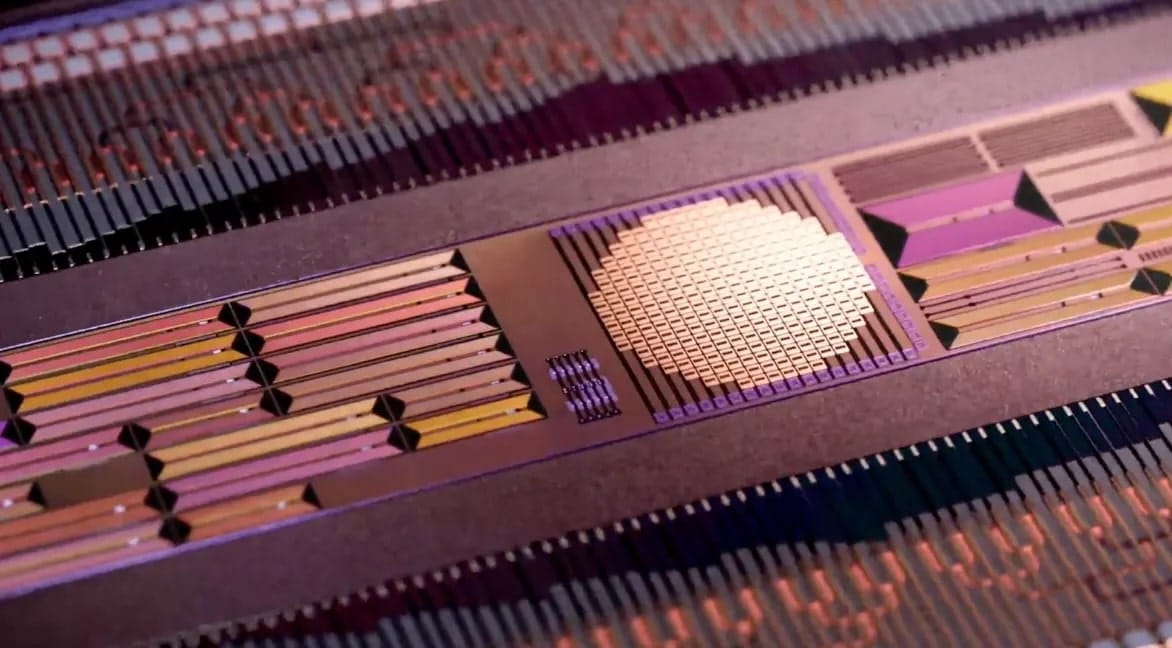A New Leap in Optical Communication
For the past seven years, the Taara team, part of Google’s X research division, has been working on an ambitious idea: transmitting data through beams of light without the need for cables. This technology has proven to be an effective solution in regions where traditional connectivity is unfeasible due to high costs, geographical obstacles, or lack of infrastructure.
Now, the team has reached a key milestone with the launch of the Taara chip, an advancement that dramatically reduces the size of the technology without sacrificing speed or range.
How Does Taara Work?
Taara’s optical communication system uses highly directed infrared light beams to transmit data between two points. It serves as an alternative to fiber optics, without the need to deploy expensive underground cables.
The first version of this technology, the Taara Lightbridge, utilized a combination of mirrors, sensors, and mechanical calibration systems to direct light beams and establish a high-speed link. Although this approach allowed for data transmission speeds of up to 20 Gbps over distances of 20 km, its size, comparable to that of a traffic light, made its implementation complex in some environments.
With the Taara chip, the company has achieved a remarkable breakthrough: the entire system has been miniaturized to the size of a fingernail, eliminating mechanical components and replacing them with advanced control software.
The Key: A Cutting-Edge Photonic Chip
The heart of this innovation is a photonic silicon chip that uses an optical phase array to direct, track, and correct light beams with extreme precision.
Instead of relying on motors and mirrors to adjust the light’s trajectory, the chip has hundreds of tiny optical emitters that can be turned on and off via software. This allows for dynamic phase modulation of the light, without the need for moving parts.
Initial experiments have shown that the Taara chip can transmit data at 10 Gbps over distances of 1 km in real outdoor environments. Google considers this an unprecedented achievement in the field of silicon photonics and plans to expand both the capacity and range of the technology with future versions that will feature thousands of optical emitters.
Pushing the Limits of Connectivity
The demand for connectivity is reaching critical levels as streaming data consumption, AI applications, and high-speed networks grow.
Currently, fiber optics remain the gold standard in connectivity, but its deployment is not always feasible due to high costs, technical complexity, and geographical barriers.
On the other hand, traditional wireless networks, such as 5G and Wi-Fi, rely on the electromagnetic spectrum, which is becoming increasingly congested and facing capacity issues.
The Taara team sees optical communication as a future with virtually infinite bandwidth. Like fiber optics, but without cables, Taara can bring connectivity to inaccessible places and alleviate congestion in the radio spectrum, offering an innovative alternative to existing solutions.
Applications and the Future of the Taara Chip
Thanks to its compact and efficient design, the Taara chip could redefine internet infrastructure in various areas:
- Connectivity in remote regions: it could provide high-speed internet to isolated communities without the need for expensive infrastructure.
- Optimization of data centers: it would enhance server interconnection without the limitations of fiber cables.
- Autonomous vehicles: it would facilitate communication between vehicles with faster and more secure data transmission.
- Global mesh networks: it would enable large-scale interconnection of devices with minimal latency.
The Google team plans to launch its first commercial product based on the Taara chip in 2026, but before it hits the market, they invite researchers and developers to explore potential applications for this groundbreaking technology.
Can Google Stick With Its Bet on Taara?
The Taara project originated from the now-defunct Google Loon, an ambitious plan to provide internet to remote areas using balloon technology. Unlike Loon, which was canceled, Taara has proven to be more practical and viable, with successful implementations in India, Africa, and the Caribbean.
However, Google’s track record with innovative projects is mixed: while initiatives like Waymo (autonomous cars) have thrived, others like Google Stadia have been prematurely abandoned.
If Taara manages to sustain itself and scale its technology, it could redefine how the internet is deployed worldwide, competing with solutions like SpaceX’s Starlink and other advanced connectivity networks.
For now, the Taara chip represents a strong step toward a future where connectivity is not limited by cables, costs, or geographical barriers, but will be as limitless as light itself.
via: X.company

